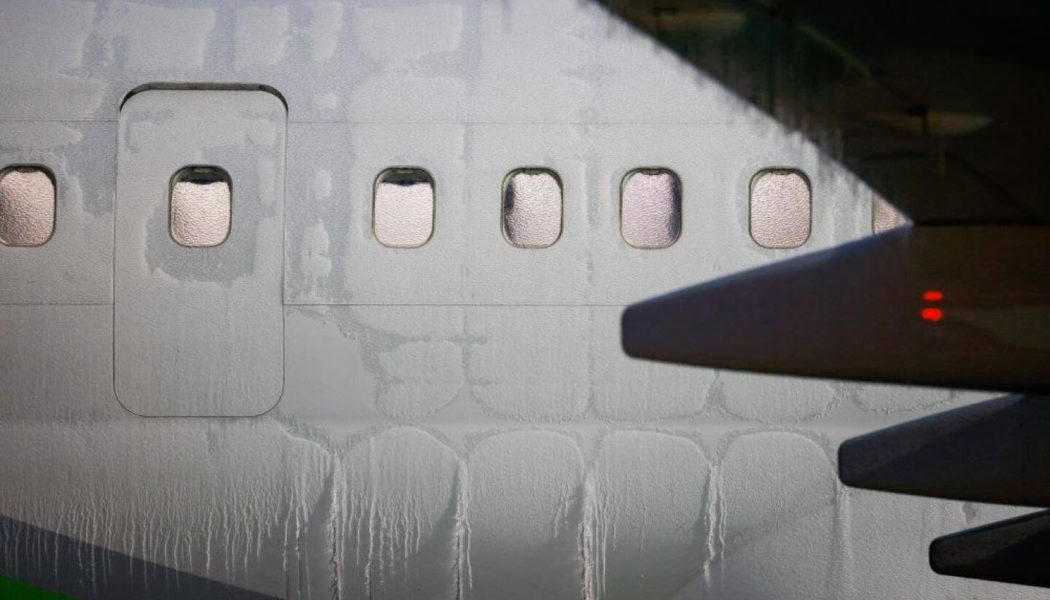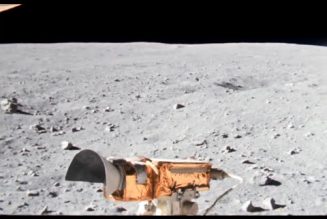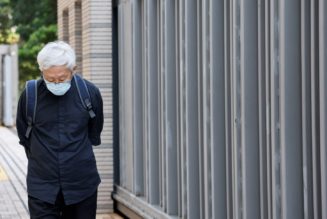If you are boarding a plane in much of the United States during winter, chances are the aircraft will need to have a specially trained crew spray it with de-icing fluid before takeoff to remove ice and snow (or prevent more from sticking).
Even small amounts of snow, frost, or ice (or ice contaminants, in airline parlance), especially on the wings and tail, are dangerous for airplanes. For one, they add extra weight, which can make it challenging for pilots to do performance calculations, like how fast the plane can climb and if there’s enough runway to clear obstacles. They also interfere with air flow, which reduces lift and could block vents or impede sensors from operating correctly.
Simply put, de-icing allows travelers to fly the friendly skies safely during wintery conditions. Here’s everything you need to know about how and why airlines de-ice planes before takeoff.
When do planes get de-iced?
De-icing happens most frequently from October to April each year, although according to Celley Buchanan, vice president of airport operations and customer service at Alaska Airlines, “De-icing can happen and be needed at any time of the year; it just depends on the temperature outside.”
Both Buchanan and Catherine Morrow, a senior communications coordinator at Delta Air Lines, said inspections are done on all aircraft when temperatures dip below 50 degrees, even briefly.
“For example, if the air is more humid and temperatures drop overnight, there could be an accumulation the next morning, even if the temperature warms up a bit,” Morrow said.
After each flight during colder months, the flight deck crew will inspect the plane for any ice contaminants, and if they find any, they’ll notify their de-icing crew, which may be staff or contract workers. It’s the responsibility of each airline, not each airport, to ensure all the planes across their network are properly prepared for takeoff, according to Perry Cooper, a media relations manager at Seattle–Tacoma International Airport.

An Alaska Airlines aircraft during an ice storm in Seattle in December 2022
Courtesy of Ingrid Barrentine/Alaska Airlines
If a plane does need de-icing, it will typically happen after all passengers and crew are onboard, and the plane is otherwise ready to take off. That’s because the solutions used to remove and prevent accumulation don’t have an infinite protection period, and time is of the essence.
“We use a term in the industry called holdover time, which is calculated by your flight deck crew, and they’ll use several different components, like the temperature outside and current weather conditions, to determine once an airplane is sprayed, how much time do you have to take off safely,” Buchanan said. Typically, she said, it’s about 22 minutes between when the plane is sprayed and when the plane should take off.
How airplane de-icing happens
At some airports, de-icing is performed right at the gate. At other airports, especially those located in places where snow is a known quantity, like Boston and New York, planes pull back from the jet bridge and taxi to designated de-icing stations closer to the runway. There, the aircraft is de-iced and can take off immediately afterward.
The first step of de-icing entails spraying the aircraft with a solution made of glycol (which comes from ethylene, the chemical used to make polyester and antifreeze) and water. The de-icing fluid is heated and applied at high pressure, so it melts the contaminants. It is typically dyed orange to help crew members see where they’ve already sprayed the liquid. Though the pilots disable the aircraft’s ventilation system during the de-icing process, sometimes the odor of the fluids, similar to maple syrup, penetrates the cabin, but it isn’t considered unsafe, according to the U.S. Food and Drug Administration.
Depending on what is happening with the ambient temperature, Buchanan said that’s generally enough to ensure a safe departure (which requires no ice contaminants on the wings or tail of the aircraft). However, in more extreme conditions, like sleet, freezing rain, or falling snow, airlines often decide to spray the plane with an anti-icing fluid, which helps give the plane a little additional time to take off before new accumulation occurs. This second solution (also made of glycol but less water, so it’s thicker) is green, unheated, and slides off the wings after the plane starts its ascent.
While it’s colder at high altitudes than on the ground—the National Institutes of Health estimates the temperature at cruising altitude to typically be between −92°F to −20°F— ice actually isn’t a problem in the air. That’s because the aircraft has onboard mechanisms, such as routing hot engine air through pipes in the wings and tail, that prevent ice contaminants from building up on the plane during flight.
Certain on-ground conditions, like freezing rain that is falling rapidly, make it challenging for crews to de-ice and the plane to depart before more ice accumulates. In those cases, Buchanan said, safety is the number one priority. If the airline determines that it won’t be able to safely depart within that plane’s holdover time, it might have to delay or cancel the flight.
However, when de-icing does work, from start to finish the process takes between 5 and 10 minutes (not including time waiting in line behind other planes that need to be de-iced), depending on the aircraft size. Buchanan added that the process is generally the same regardless of the airline.
“One of the great things about the industry is that safety’s not a competitive advantage,” Buchanan said. “Airlines are really proactive about collaborating together. In fact, as an industry, we meet annually, specifically about de-icing, to talk about trends and new advancements.”

Air Canada is familiar with frigid flights—and has partnered with a company called De-Ice on a new technology that aims to simplify the process.
Photo by Shutterstock
What’s next for de-icing
While there have been few advancements in de-icing since its inception in the 1950s, that may be changing in the coming years. The de-icing fluids are costly (some estimates place the average de-icing cost for a small jet at $1,300, while large aircraft can cost over $13,000 a pop) and have been criticized as having a large carbon footprint (though in recent years, more airports have worked to recycle the fluids), so a growing number of companies are looking for alternatives.
In December 2023, Air Canada became the first airline to install De-Ice (created by a Boston-based start-up of the same name) technology on an Airbus A320.
According to De-Ice, the system “consists of tape-like strips attached to the exterior of the airplane. The strips connect to proprietary electronics inside the aircraft. When activated by the pilot, the De-Ice system generates a high-frequency current, causing electrons on the surface of the plane to jiggle, generating heat. This melts snow and ice during the boarding process, leaving the aircraft ice-free and ready for takeoff by the time the plane is ready to pull back from the gate.”
De-Ice estimates the system could eliminate an average of 30 to 45 minutes of de-icing delays per flight. In a press release, Murray Strom, senior vice president of flight operations and maintenance at Air Canada, added that the De-Ice system could significantly reduce emissions because high quantities of the de-icing chemicals wouldn’t need to be manufactured, transported, or heated, and the systems would reduce idling times during de-icing.
Currently, the De-Ice systems are going through regulatory testing. But if it’s approved, it could help airlines across the world advance their goal of net zero emissions by 2050.









